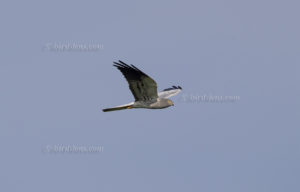 The steppes and extensive dehesas of Caceres and Trujillo are famous for their steppe bird life. Short-toed Eagle (Circaetus gallicus), Montagu’s Harrier (Circus pygargus), Lesser Kestrel (Falco naumanni), Little Bustard (Tetrax tetrax), Great Bustard (Otis tarda), Eurasian Thick-knee (Burhinus oedicnemus), Pin-tailed Sandgrouse (Pterocles alchata), Black-bellied Sandgrouse (Pterocles orientalis), Azure-winged Magpie (Cyanopica cyana) and Calandra Lark (Melanocorypha calandra) share the fruits of the holm oak with the black Iberian domestic pigs. Many birds that have rarely or completely disappeared in the rest of Europe can still be observed very well in this almost deserted area.
The steppes and extensive dehesas of Caceres and Trujillo are famous for their steppe bird life. Short-toed Eagle (Circaetus gallicus), Montagu’s Harrier (Circus pygargus), Lesser Kestrel (Falco naumanni), Little Bustard (Tetrax tetrax), Great Bustard (Otis tarda), Eurasian Thick-knee (Burhinus oedicnemus), Pin-tailed Sandgrouse (Pterocles alchata), Black-bellied Sandgrouse (Pterocles orientalis), Azure-winged Magpie (Cyanopica cyana) and Calandra Lark (Melanocorypha calandra) share the fruits of the holm oak with the black Iberian domestic pigs. Many birds that have rarely or completely disappeared in the rest of Europe can still be observed very well in this almost deserted area.
The Extremadura in southwestern Spain has always been a magical attraction for nature lovers. Nowhere else in Europe you can find a higher biodiversity of plants and especially birds. A particularly large number of birds of prey circle in the thermals above the mountain ranges and plains, which are covered with evergreen oak and cork oaks and are particularly reminiscent of the African savannah in summer. Over 80,000 Common Crane (Grus grus) spend the winter in Extremadura. Many other animals have also found refuge here. In spring you can find huge carpets of blossoms made of blue viper’s head, violet crested lavender, bright yellow usury flowers and red poppy seeds and the bewitching scent hangs everywhere
Lacquer cistus in the air. The attraction lies in the remoteness and variety of different habitats in Extremadura. A disadvantage of this remote area is that you have to travel a long way from Central Europe by car. Airfields are also quite far away, so that the rental car is not a really convincing alternative. As accommodation, I always prefer B&B in the villages. Spanish cities are loud and noisy. People like to celebrate on the piazza for a long time and operate the leaf blower and sweeper early in the morning. If you get up for the Bustards at 3:00 a.m., you need your sleep. Sleep is more likely to be found in the village. However, you will find little tourist infrastructure in the Extremadura.
In order to meet the growing demand for top images of the rarer species of Palaearctic Bird-lens.com has specifically made trips to remote places. Additionally every chance is used, if a rare bird is around the homeground. This to do everything to ensure excellent photos of the Birds of the Western Palearctic . The yield of pictures also of rare Western Palaearctic birds is very good. There are other nice images of birds, that you will find behind the tab “Picture Shop“. Just give a notice if you need a picture of a bird which is not online.